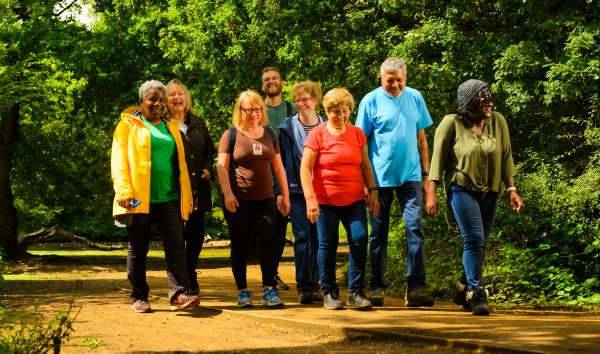The England Coast Path – What we think
Increasing access to the coast in England

Bringing the joy of walking at the coast to more people
As an island nation, our coast is treasured by many people. With some of our most spectacular natural scenery, walking on the coast can bring huge pleasure and wellbeing benefits. We think everyone should have good quality access to the coast.
But the English coastline also has some of our most economically deprived communities. These communities will gain significant benefits from the opening of the England Coast Path. Not only will good quality, well-promoted walking routes bring economic benefits but they will also improve the wellbeing of residents and visitors alike.
What we have achieved so far
Progress towards a path all around England
We are proud to have campaigned successfully for improved access to the coast and for the England Coast Path. We won the fight to have coastal access included in the law. We won the fight to maintain the coast path’s funding when it was threatened by budget cuts. And we won the fight to have the Isle of Wight included.
Since then, we have been working closely with Natural England, who have a legal duty to create the England Coast Path. Our volunteers have surveyed each stretch of coastline, put forward proposals for the route and given advice from the walker’s perspective. They are helping to make the England Coast Path the best walking experience that it can be. Once completed it will be our longest National Trail and the longest continuous coastal walking route in the world at approximately 2,700 miles.
Connecting to paths in Wales and Scotland
The England Coast Path ends at the Welsh border at points near Bristol and Birkenhead. Here the Wales Coast Path begins. At the Scottish border, the path ends near Gretna and Berwick-upon-Tweed. There are no plans for a continuous Scottish coastal path, but you can continue walking around the coast using Scottish access rights.
There are already paths running along much of Scotland's coast. To the west, there are coastal paths from the Mull of Galloway through Ayrshire, Inverclyde and across to Arran, with trails also in Bute and Kintyre. On the east coast, there are trails along the Berwickshire coast, with the John Muir Trail through East Lothian and Edinburgh which links across to the Fife Coastal Path. There are also trails around parts of Angus, Aberdeenshire and Moray. Also in development is the John o'Groats Trail from Inverness to the far north.
Ramblers Scotland supports the idea of a network of paths that make it easier to walk around the coast.

A greater freedom to roam
The England Coast Path is the latest success in our long-running campaign for the freedom to roam. Thanks to our campaigning, we not only have access to walk on a waymarked path but also on the coastal margin, which is land between the trail and the sea. Much of the coastal margin is open access land (land with the freedom to roam).
Opening the England Coast Path
The path is being opened in stages and our volunteers are still working with Natural England and local authorities to help finish it. You can follow progress using the Ramblers Coast Path Countdown which tracks the number of miles completed.
As a charity, you can support our work to protect and improve our paths and green spaces by donating or becoming a member. Together we’ll increase access to green spaces, open up more places to walk and boost Britain’s wellbeing one step at a time.

Where you can walk in England and Wales
Helping you understand your rights, where you’re allowed to walk, and how to find new places to explore.

Campaign with us - protect the places we walk
Walking is a simple pleasure that should be open to everyone, so we campaign to remove barriers to walking and we protect the places we love to wander.